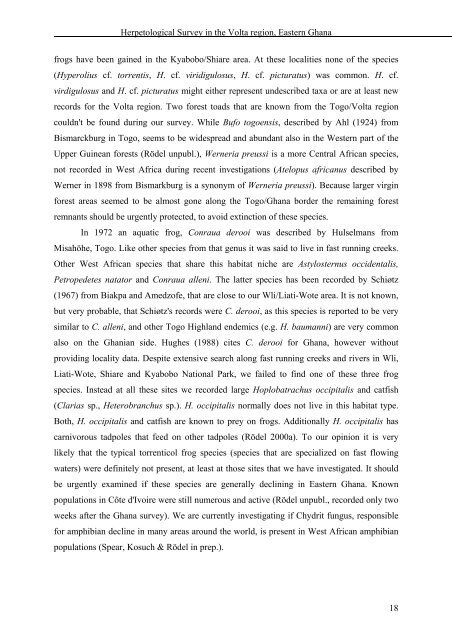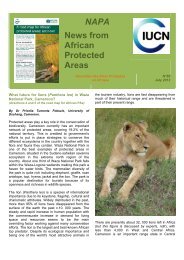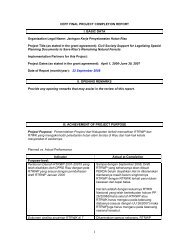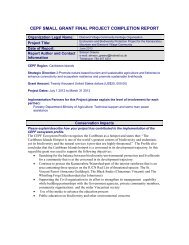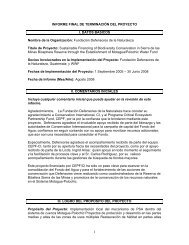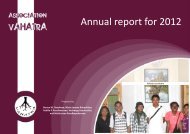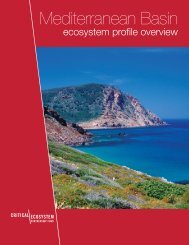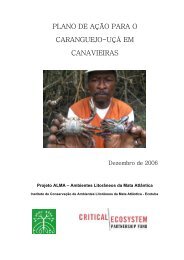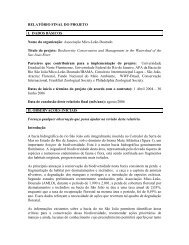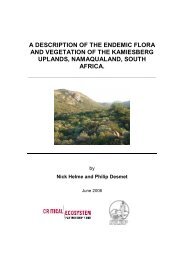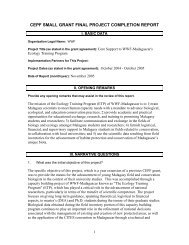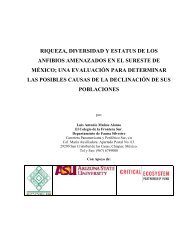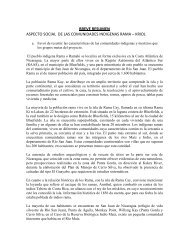Herpetological survey in the Volta region, Eastern Ghana - Critical ...
Herpetological survey in the Volta region, Eastern Ghana - Critical ...
Herpetological survey in the Volta region, Eastern Ghana - Critical ...
You also want an ePaper? Increase the reach of your titles
YUMPU automatically turns print PDFs into web optimized ePapers that Google loves.
<strong>Herpetological</strong> Survey <strong>in</strong> <strong>the</strong> <strong>Volta</strong> <strong>region</strong>, <strong>Eastern</strong> <strong>Ghana</strong><br />
frogs have been ga<strong>in</strong>ed <strong>in</strong> <strong>the</strong> Kyabobo/Shiare area. At <strong>the</strong>se localities none of <strong>the</strong> species<br />
(Hyperolius cf. torrentis, H. cf. viridigulosus, H. cf. picturatus) was common. H. cf.<br />
virdigulosus and H. cf. picturatus might ei<strong>the</strong>r represent undescribed taxa or are at least new<br />
records for <strong>the</strong> <strong>Volta</strong> <strong>region</strong>. Two forest toads that are known from <strong>the</strong> Togo/<strong>Volta</strong> <strong>region</strong><br />
couldn't be found dur<strong>in</strong>g our <strong>survey</strong>. While Bufo togoensis, described by Ahl (1924) from<br />
Bismarckburg <strong>in</strong> Togo, seems to be widespread and abundant also <strong>in</strong> <strong>the</strong> Western part of <strong>the</strong><br />
Upper Gu<strong>in</strong>ean forests (Rödel unpubl.), Werneria preussi is a more Central African species,<br />
not recorded <strong>in</strong> West Africa dur<strong>in</strong>g recent <strong>in</strong>vestigations (Atelopus africanus described by<br />
Werner <strong>in</strong> 1898 from Bismarkburg is a synonym of Werneria preussi). Because larger virg<strong>in</strong><br />
forest areas seemed to be almost gone along <strong>the</strong> Togo/<strong>Ghana</strong> border <strong>the</strong> rema<strong>in</strong><strong>in</strong>g forest<br />
remnants should be urgently protected, to avoid ext<strong>in</strong>ction of <strong>the</strong>se species.<br />
In 1972 an aquatic frog, Conraua derooi was described by Hulselmans from<br />
Misahöhe, Togo. Like o<strong>the</strong>r species from that genus it was said to live <strong>in</strong> fast runn<strong>in</strong>g creeks.<br />
O<strong>the</strong>r West African species that share this habitat niche are Astylosternus occidentalis,<br />
Petropedetes natator and Conraua alleni. The latter species has been recorded by Schiøtz<br />
(1967) from Biakpa and Amedzofe, that are close to our Wli/Liati-Wote area. It is not known,<br />
but very probable, that Schiøtz's records were C. derooi, as this species is reported to be very<br />
similar to C. alleni, and o<strong>the</strong>r Togo Highland endemics (e.g. H. baumanni) are very common<br />
also on <strong>the</strong> Ghanian side. Hughes (1988) cites C. derooi for <strong>Ghana</strong>, however without<br />
provid<strong>in</strong>g locality data. Despite extensive search along fast runn<strong>in</strong>g creeks and rivers <strong>in</strong> Wli,<br />
Liati-Wote, Shiare and Kyabobo National Park, we failed to f<strong>in</strong>d one of <strong>the</strong>se three frog<br />
species. Instead at all <strong>the</strong>se sites we recorded large Hoplobatrachus occipitalis and catfish<br />
(Clarias sp., Heterobranchus sp.). H. occipitalis normally does not live <strong>in</strong> this habitat type.<br />
Both, H. occipitalis and catfish are known to prey on frogs. Additionally H. occipitalis has<br />
carnivorous tadpoles that feed on o<strong>the</strong>r tadpoles (Rödel 2000a). To our op<strong>in</strong>ion it is very<br />
likely that <strong>the</strong> typical torrenticol frog species (species that are specialized on fast flow<strong>in</strong>g<br />
waters) were def<strong>in</strong>itely not present, at least at those sites that we have <strong>in</strong>vestigated. It should<br />
be urgently exam<strong>in</strong>ed if <strong>the</strong>se species are generally decl<strong>in</strong><strong>in</strong>g <strong>in</strong> <strong>Eastern</strong> <strong>Ghana</strong>. Known<br />
populations <strong>in</strong> Côte d'Ivoire were still numerous and active (Rödel unpubl., recorded only two<br />
weeks after <strong>the</strong> <strong>Ghana</strong> <strong>survey</strong>). We are currently <strong>in</strong>vestigat<strong>in</strong>g if Chydrit fungus, responsible<br />
for amphibian decl<strong>in</strong>e <strong>in</strong> many areas around <strong>the</strong> world, is present <strong>in</strong> West African amphibian<br />
populations (Spear, Kosuch & Rödel <strong>in</strong> prep.).<br />
18


